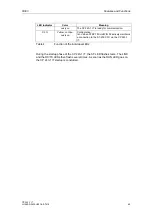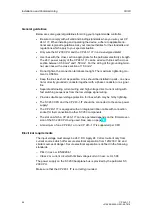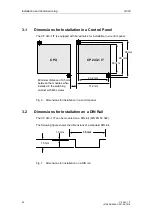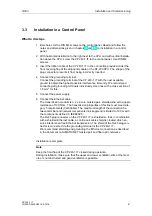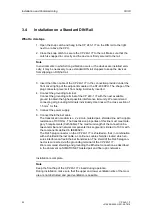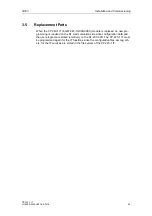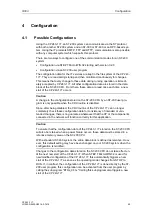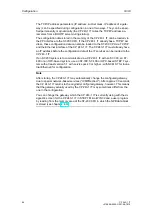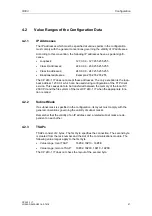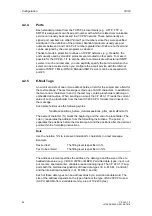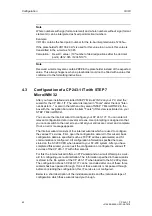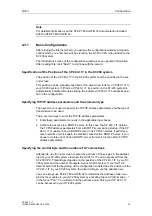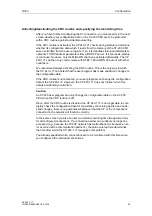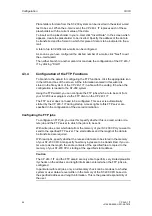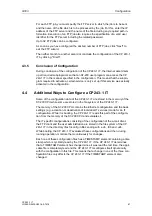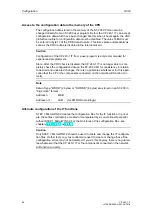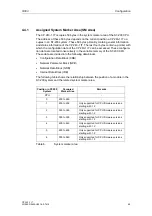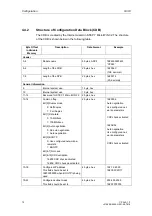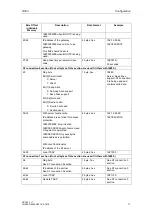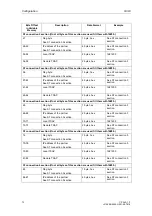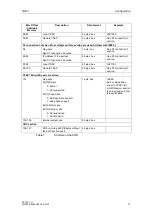
Configuration
03/03
CP 243-1 IT
J31069-D0429-U001-A0-7618
58
4.2.4 Ports
Each standard protocol from the TCP/IP protocol family (e.g., HTTP, FTP or
SMTP) is assigned its own fixed port number with which a related communication
service can usually be accessed in a TCP/IP network. These permanently as-
signed port numbers are called "known" port numbers since they were specified
worldwide in the definition of the protocol. Standard protocols usually use port
numbers between 0 and 1024. Port numbers greater than 1024 are not fixed and
can be assigned by the user programs as desired.
Thanks to modern protective routines on TCP/IP networks (e.g., firewalls), the
ports usually used by standard protocols are rerouted to other ports. To make it
possible for the CP 243-1 IT to also be able to communicate with external SMTP
servers in such environments, you can explicitly specify the port via which such a
server can be accessed when you configure the e-mail service with the Internet
wizard of STEP 7 Micro/WIN 32. Standard SMTP servers can be accessed with
port 25.
4.2.5 E-Mail
Tags
An e-mail consists of one or two address fields, a field for the subject and a field for
the text message. The text message is made up of ASCII characters. In addition to
the two control characters \n and \t, the text may contain placeholders defining an
embedded data value. When sending an e-mail, the CP 243-1 IT reads the current
value of such a placeholder from the local S7-200 CPU, formats it and inserts it in
the message.
Such placeholders use the following syntax.
%address:positions_before_decimal.positions_after_decimalFormat%
The percent character (%) marks the beginning and the end of a placeholder. The
colon (:) separates the address from the formatting instructions. The period (.)
separates the positions before the decimal point and the positions after the decimal
point within the formatting instructions.
Note
Use the notation %% to represent individual % characters in a text message.
Example:
Desired text:
The filling level is specified in %.
Text to be entered :
The filling level is specified in %%.
The address element specifies the address, the data type and the size of the em-
bedded data value (e.g., VD100, VW50 or MB20). Permitted data types: input, out-
put, marker, special marker, variable area and analog input. The CP 243-1 IT sup-
ports both the German designations of these data types (E, A, M, SM, V and AE)
and the international notations (I, Q, M, SM, V and AI).
Each of these data types can be addressed as byte, word and double word. The
size of the address depends on the type of data or the type of S7-200 CPU used.
(A CPU 226XM offers a variable memory area of 10,240 bytes.)
Содержание CP 243-1 IT
Страница 46: ...Installation and Commissioning 03 03 CP 243 1 IT J31069 D0429 U001 A0 7618 46 ...
Страница 94: ...Programming 03 03 CP 243 1 IT J31069 D0429 U001 A0 7618 94 ...
Страница 106: ...Diagnosis 03 03 CP 243 1 IT J31069 D0429 U001 A0 7618 106 ...
Страница 120: ...Technical Data 03 03 CP 243 1 IT J31069 D0429 U001 A0 7618 120 ...
Страница 130: ...Example 03 03 CP 243 1 IT J31069 D0429 U001 A0 7618 130 ...


